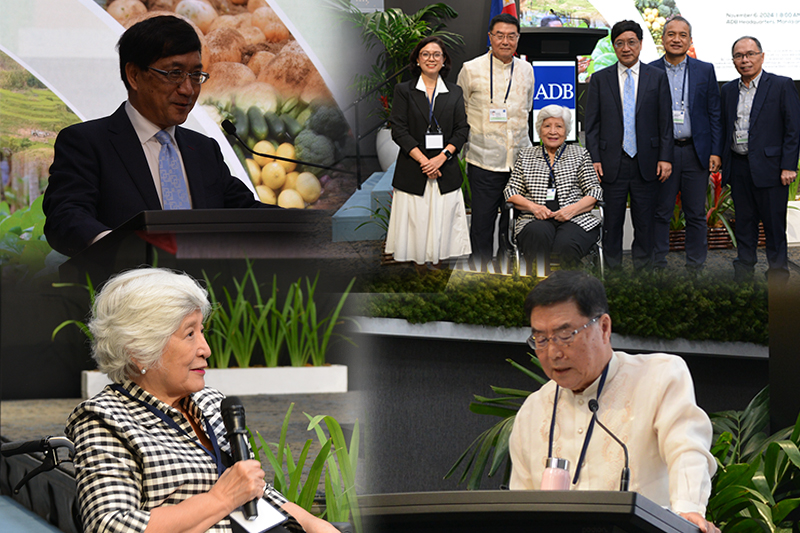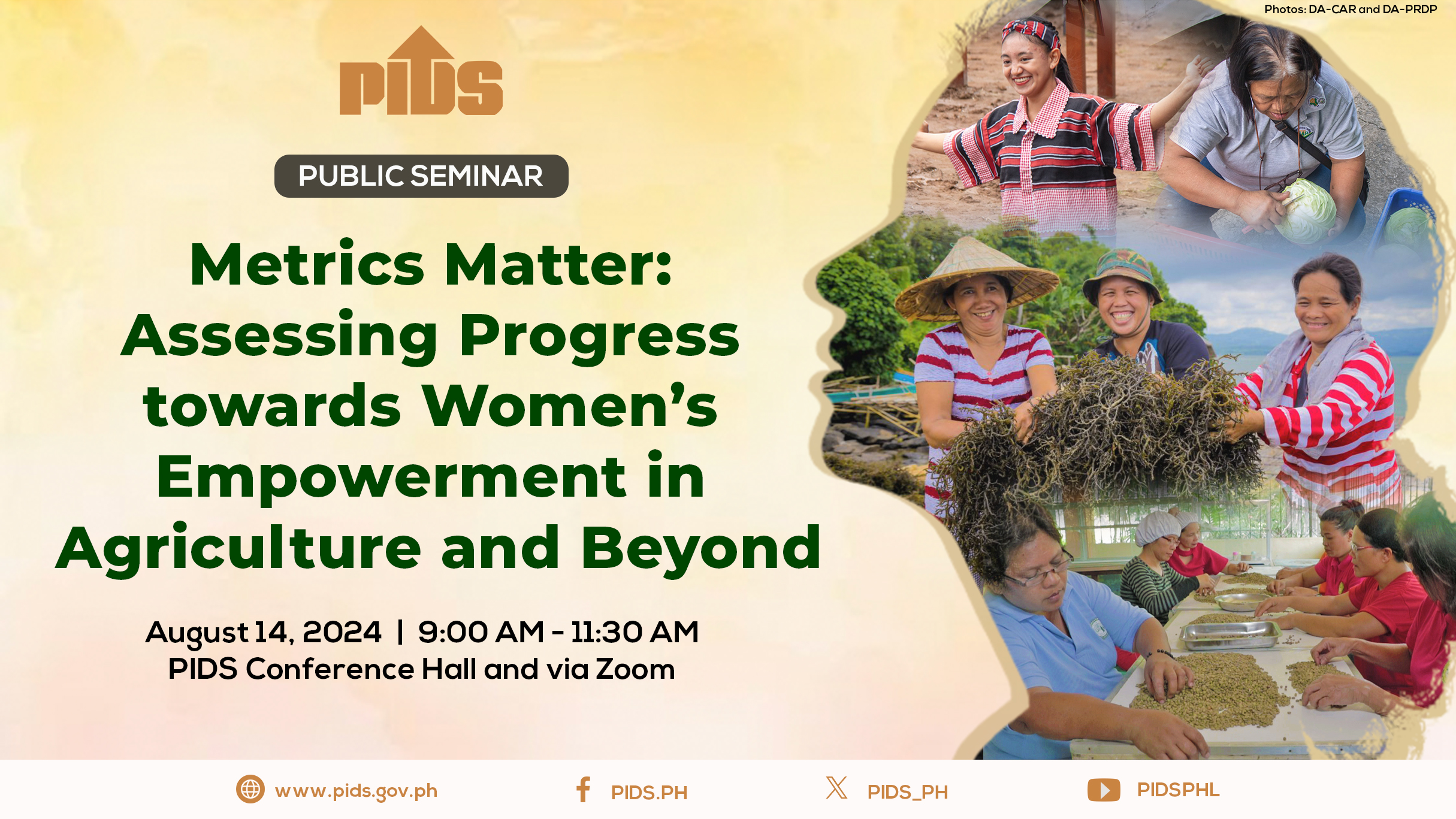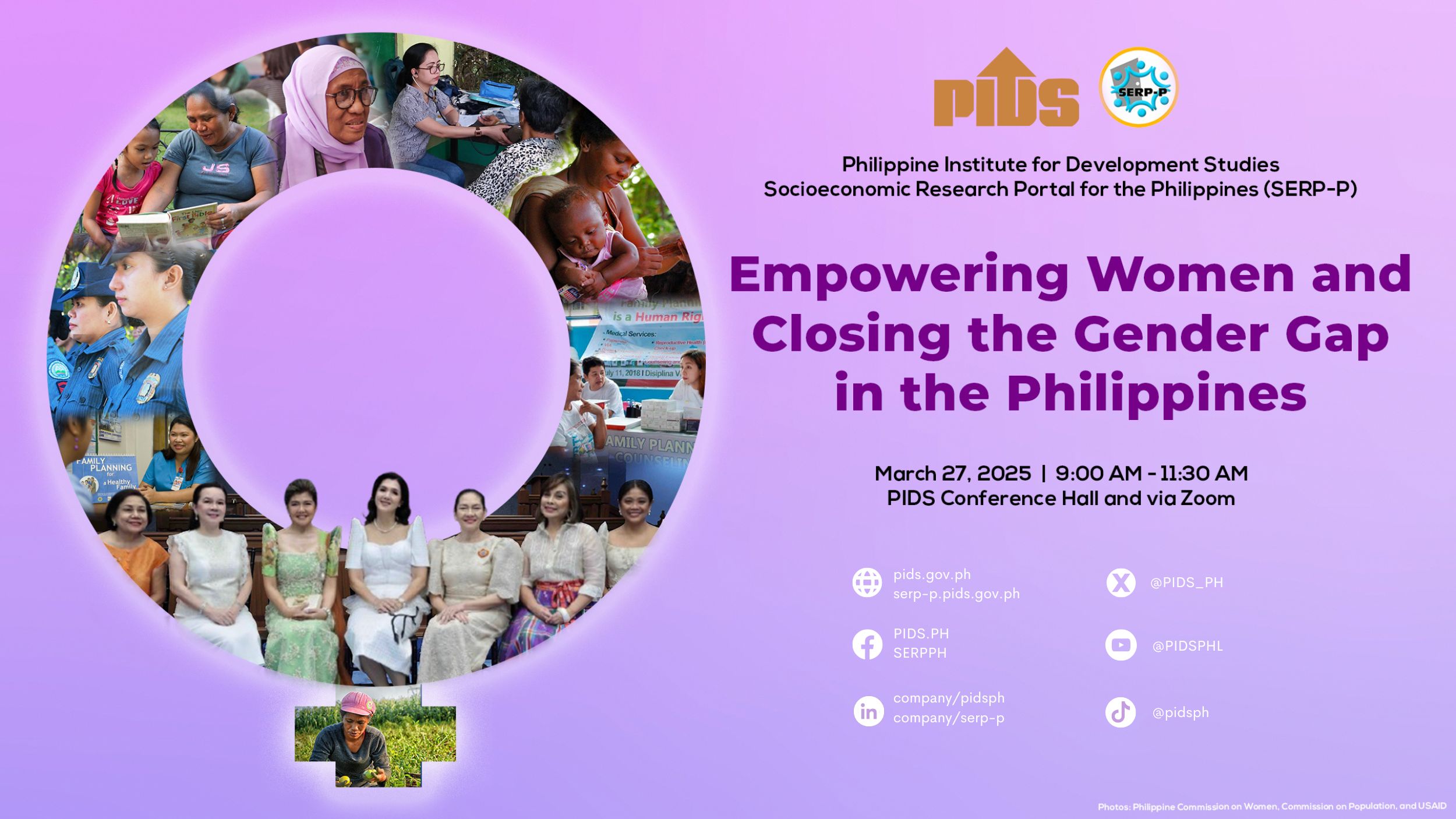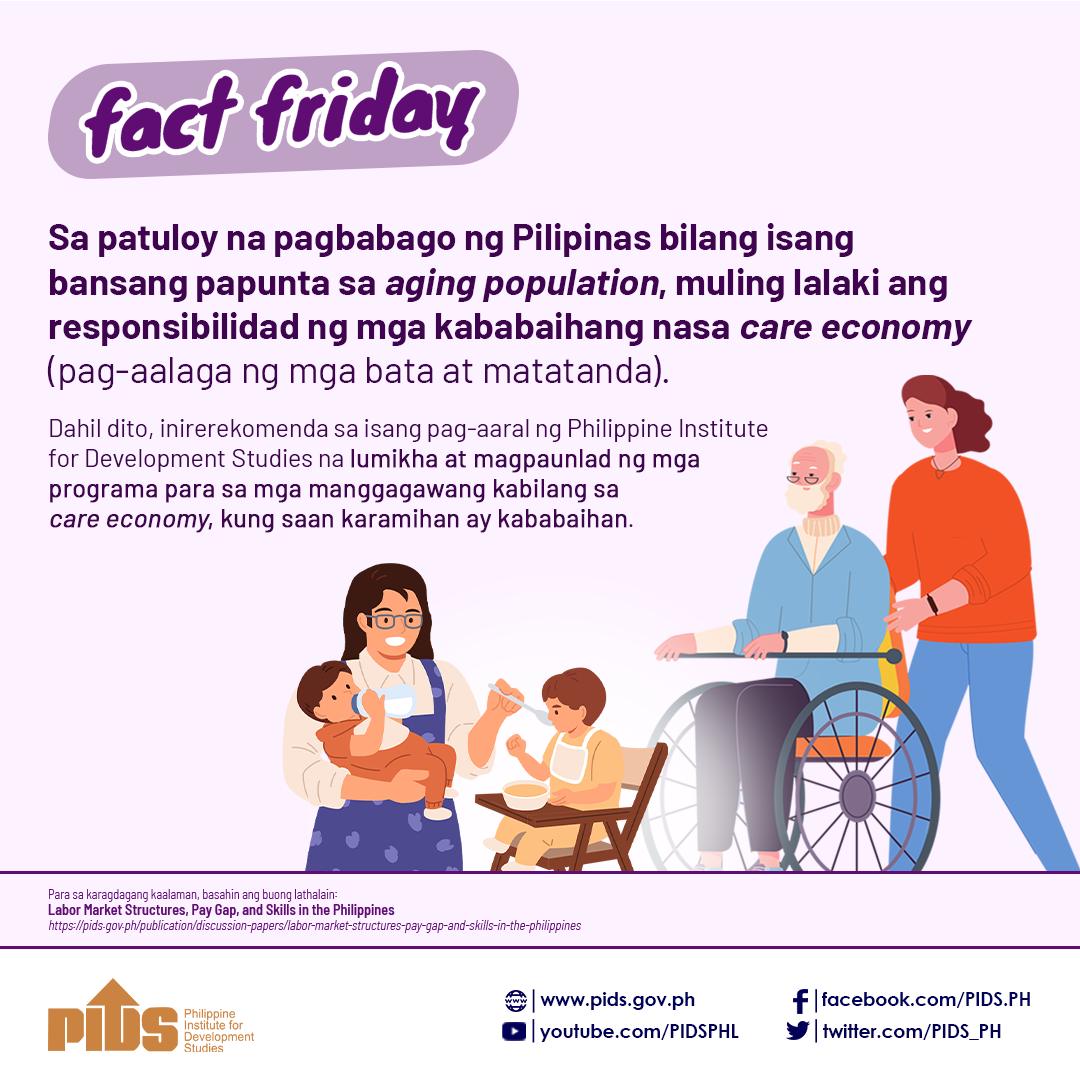
While efforts have been done to give Filipino women equal labor opportunities in the country, much still needs to be done.
In the agriculture sector alone, a quick look at available data on wages of men and women would show some gaps, with men receiving higher wages.
This was according to Roehlano Briones of the Philippine Institute for Development Studies (PIDS), during a public seminar on “Engendering Work and Human Capital: Promoting Opportunities and Understanding Tradeoffs through a Gender Lens”.
“Indeed, if you look at the wages for agriculture, males still [receive] more than females. It's around 12 pesos in 2016… The gap has usually been there and it’s usually in the order of 10, 12 pesos in real terms,” Briones explained, citing the Agricultural Labor Survey of the Philippine Statistics Authority (PSA).
However, he disagreed with PSA’s data which showed that agricultural tasks are “paid the same rate regardless of gender”, and that the only probable reason for the differences in wages could be “because of differences in activities being done”.
“The same activity can actually be paid different wages. In fact, wages are lower for women compared to men in agriculture,” Briones explained.
He added that in another survey of agricultural workers conducted by PIDS using the same agricultural tasks found in the PSA data, results showed that on average, men earn more in fertilizer and pesticide application, weeding, and planting, while women are being paid 21 percent less.
The said survey also showed that wage disparities can be seen in agricultural tasks for different crops including palay, corn, coconut, and sugar cane—which were also used in the survey conducted by PSA.
Following these results, Briones urged the PSA to report segregated data by sex of agricultural workers for wages paid per activity.
Furthermore, he emphasized the need to increase women’s bargaining power by providing them with “preferential access to government services and transfers such as the conditional cash transfer.
Establishing women’s groups that are active in labor market information and advocacy campaigns should not be concentrated in urban areas, according to Briones, considering the prevalence of labor market discrimination in rural areas.
Finally, the PIDS senior research fellow stressed the importance of campaigning for the protection of women’s rights and gender equality starting at the grassroots.
The public seminar was organized by PIDS in celebration of the International Day of Women and National Women’s Month. ###
In the agriculture sector alone, a quick look at available data on wages of men and women would show some gaps, with men receiving higher wages.
This was according to Roehlano Briones of the Philippine Institute for Development Studies (PIDS), during a public seminar on “Engendering Work and Human Capital: Promoting Opportunities and Understanding Tradeoffs through a Gender Lens”.
“Indeed, if you look at the wages for agriculture, males still [receive] more than females. It's around 12 pesos in 2016… The gap has usually been there and it’s usually in the order of 10, 12 pesos in real terms,” Briones explained, citing the Agricultural Labor Survey of the Philippine Statistics Authority (PSA).
However, he disagreed with PSA’s data which showed that agricultural tasks are “paid the same rate regardless of gender”, and that the only probable reason for the differences in wages could be “because of differences in activities being done”.
“The same activity can actually be paid different wages. In fact, wages are lower for women compared to men in agriculture,” Briones explained.
He added that in another survey of agricultural workers conducted by PIDS using the same agricultural tasks found in the PSA data, results showed that on average, men earn more in fertilizer and pesticide application, weeding, and planting, while women are being paid 21 percent less.
The said survey also showed that wage disparities can be seen in agricultural tasks for different crops including palay, corn, coconut, and sugar cane—which were also used in the survey conducted by PSA.
Following these results, Briones urged the PSA to report segregated data by sex of agricultural workers for wages paid per activity.
Furthermore, he emphasized the need to increase women’s bargaining power by providing them with “preferential access to government services and transfers such as the conditional cash transfer.
Establishing women’s groups that are active in labor market information and advocacy campaigns should not be concentrated in urban areas, according to Briones, considering the prevalence of labor market discrimination in rural areas.
Finally, the PIDS senior research fellow stressed the importance of campaigning for the protection of women’s rights and gender equality starting at the grassroots.
The public seminar was organized by PIDS in celebration of the International Day of Women and National Women’s Month. ###










